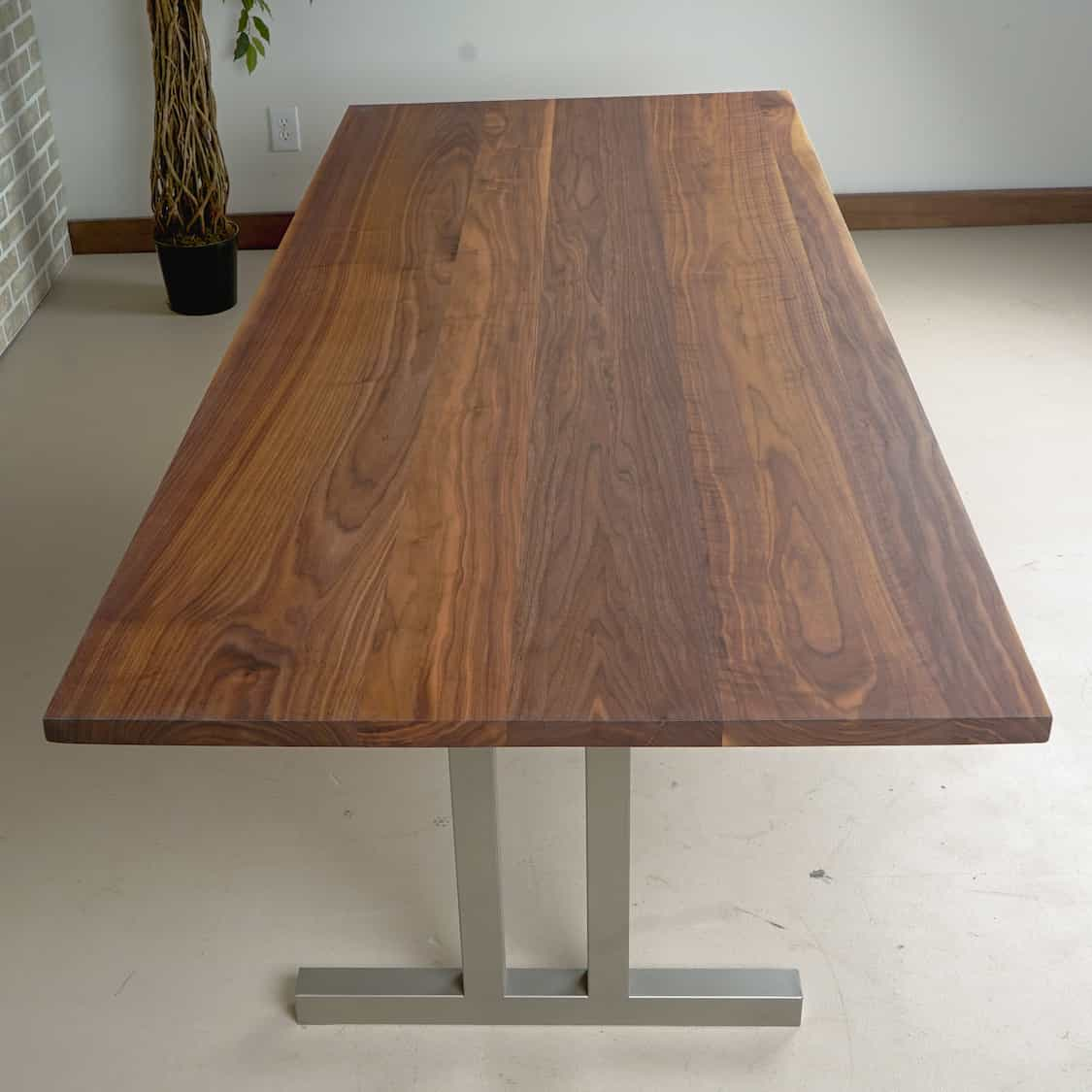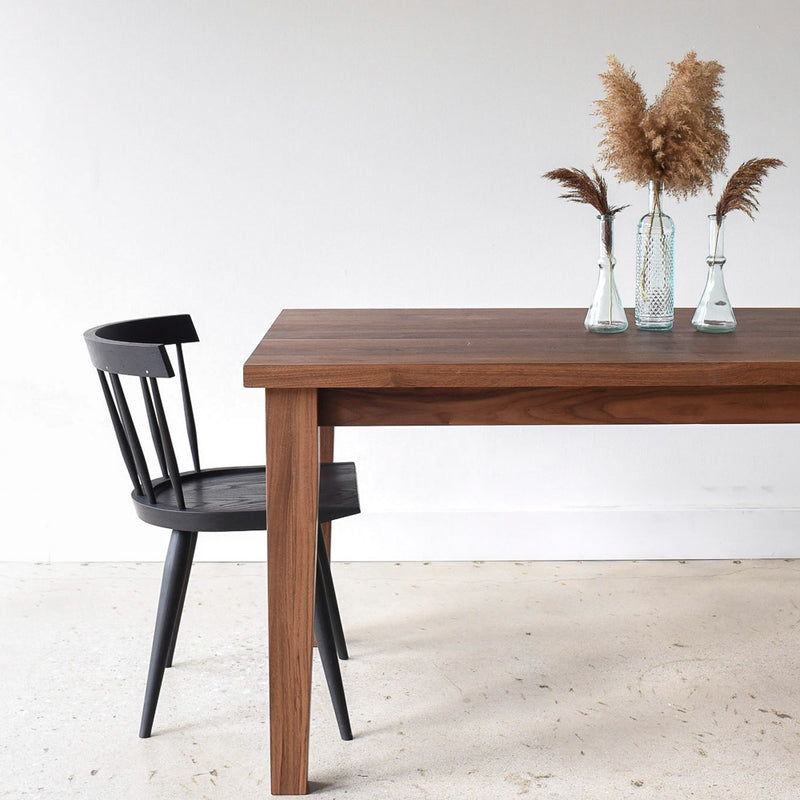Improve Your Dining Experience with Classic Dining Table Legs Wood
Wiki Article
Exploring the Various Kinds Of Dining Table Legs Wood for Your Dining Room
The option of eating table legs wood can greatly impact both the practical and aesthetic top qualities of your dining room. Strong wood choices, such as oak and walnut, offer a classic look with unparalleled toughness, while engineered timber options use ingenious layouts that mimic the splendor of natural grains. In addition, the expanding trend of recovered timber introduces a lasting element that charms to environmentally aware consumers. As we check out these various choices, it comes to be vital to take into consideration not only the aesthetic charm but also the sensible implications of each product choice. What variables should direct your choice?Solid Timber Options

Unlike crafted products, strong timber is much less vulnerable to bending and damages over time when properly maintained. Each piece of solid wood is distinct, showcasing private attributes that include to the beauty and personality of the eating table.
In addition, strong timber can be completed in countless means, ranging from all-natural oils to stained coatings, allowing home owners to individualize their furnishings to match their decor. In recap, selecting strong timber for dining table legs not just makes sure structural integrity but likewise boosts the aesthetic charm of the dining location, making it a beneficial investment for any home.
Engineered Timber Alternatives

Plywood, built from multiple layers of timber veneer, is steady and specifically solid, making it an exceptional option for dining table legs. Its layered make-up enables it to withstand changes in moisture and temperature far better than standard solid wood. MDF, on the various other hand, uses a smooth surface for paint or veneering, allowing designers to attain a refined look while maintaining architectural integrity.
When choosing crafted timber alternatives, it is necessary to take into consideration the intended use and wanted visual. These products not just enhance the functionality of dining areas yet also allow for greater style adaptability, ensuring that contemporary and traditional styles can exist together sympathetically.
Reclaimed Wood Features
Recovered timber uses a special blend of sustainability and character, making it a progressively prominent selection for eating table legs. Sourced from old barns, manufacturing facilities, and various other frameworks, redeemed timber personifies a background that brand-new products just can not reproduce. Each piece carries its very own tale, noted by unique flaws, knots, and differing grain patterns, which add to a table's special aesthetic charm.In enhancement to its visual beauty, redeemed wood is an eco-friendly option. By repurposing previously used products, it minimizes the need for brand-new lumber, therefore helping to decrease and conserve woodlands waste. This straightens with a growing consumer preference for lasting methods in decor.
In addition, recovered wood is often much more durable than freshly gathered timber due to its age. The all-natural drying process that redeemed wood undergoes outcomes in a denser and stronger product, making it less prone to bending and splitting. This improves the longevity of dining tables, enabling them to withstand the roughness of daily use.
Softwood vs. Hardwood
When selecting table legs, understanding the distinctions between softwood and hardwood is essential for achieving both practical our website and aesthetic goals. Softwoods, stemmed from coniferous trees, such as yearn and cedar, are defined by their lighter weight and ease of adjustment. They generally show a more rustic look, making them suitable for laid-back or country-style dining rooms. Softwoods are typically less long lasting than woods, which can be a consideration for households or those seeking long life in their furnishings.On the various other hand, hardwoods, sourced from deciduous trees like cherry, oak, and maple, are renowned for their thickness, toughness, and sturdiness. The complex grain patterns and abundant colors of hardwoods supply a innovative and ageless charm, making them optimal for official dining settings. While woods tend to be much more expensive and much heavier, their durability against deterioration commonly validates the financial investment.
Eventually, the option between softwood and hardwood for dining table legs need to straighten with your layout vision, use requirements, and budget plan, making certain that your eating area shows your personal style while remaining useful with time.

Therapies and coatings
The visual allure and longevity of dining table legs can be dramatically improved through numerous coatings and therapies. These procedures not just protect the wood from damage however likewise raise its appearance, allowing it to match diverse interior designs.One common treatment is discoloring, which penetrates the timber and boosts its all-natural grain while adding color. Stains provide an abundant, classy appearance, making it possible for home owners to match their furniture with existing decor. On the other hand, clear finishes such as polyurethane or varnish create a protective layer without changing the wood's initial shade, making sure longevity versus deterioration.
Furthermore, natural oils, like tung or linseed oil, nurture the timber and supply a refined sheen, have a peek here all while being eco-friendly. These oils permit the surface area to take a breath, avoiding dampness build-up and prospective warping.
For those looking for a rustic appeal, distressed or weather-beaten finishes can be used to create an aged appearance, including character to the item. Eventually, the choice of coatings and treatments depends on individual preference, wanted visual appeals, and the specific timber type, making it important to take into consideration these aspects when selecting table legs for your space.
Verdict
Finally, the option of table leg materials dramatically influences both the visual and functional elements of an eating room. Strong timbers, crafted alternatives, and redeemed choices each deal distinct advantages, dealing with various preferences and needs. Comprehending the differences between woods and softwoods, along with appropriate coatings and treatments, allows for educated decision-making. Ultimately, the selection of timber type must line up with preferred design, resilience, and environmental considerations, improving the total dining experience.The selection of eating table legs timber can greatly impact both the aesthetic and functional high qualities of your dining room - Dining Table Legs Wood. Strong wood alternatives, such as oak and walnut, give a timeless appearance with unequaled longevity, while crafted timber choices use ingenious styles that imitate the richness of natural grains. Strong wood offers a timeless top quality that can raise the overall design of an eating area. Each item of strong timber is distinct, showcasing individual internet features that add to the charm and character of the dining table
Additionally, recovered timber is often much more durable than newly harvested timber due to its age.
Report this wiki page